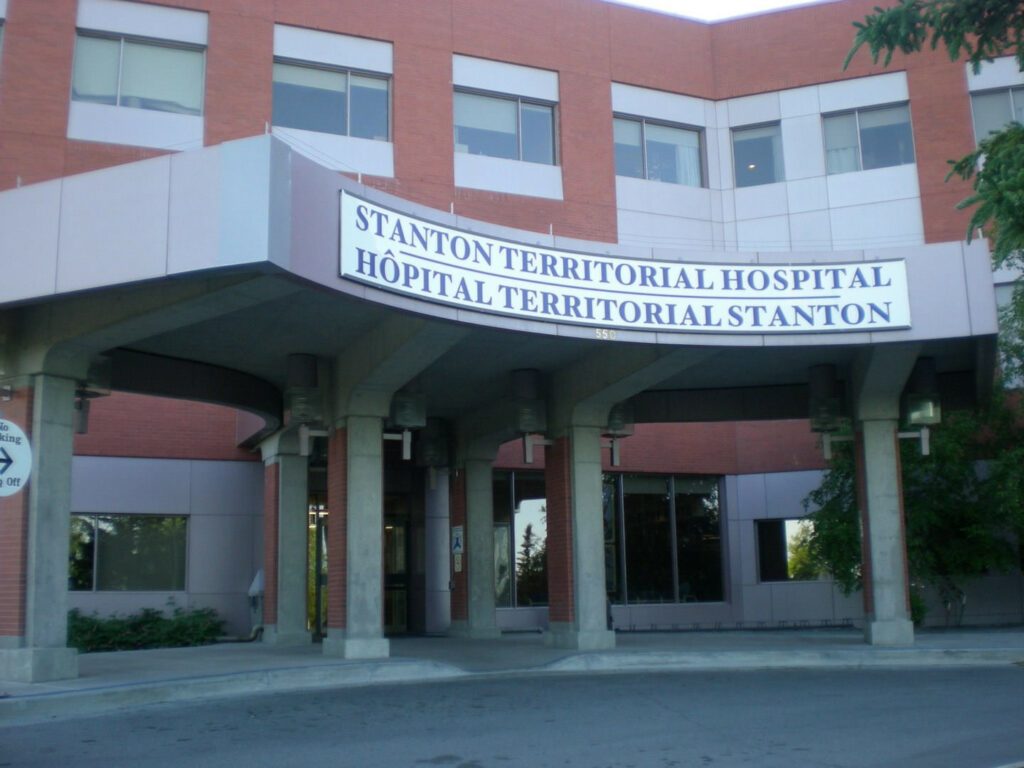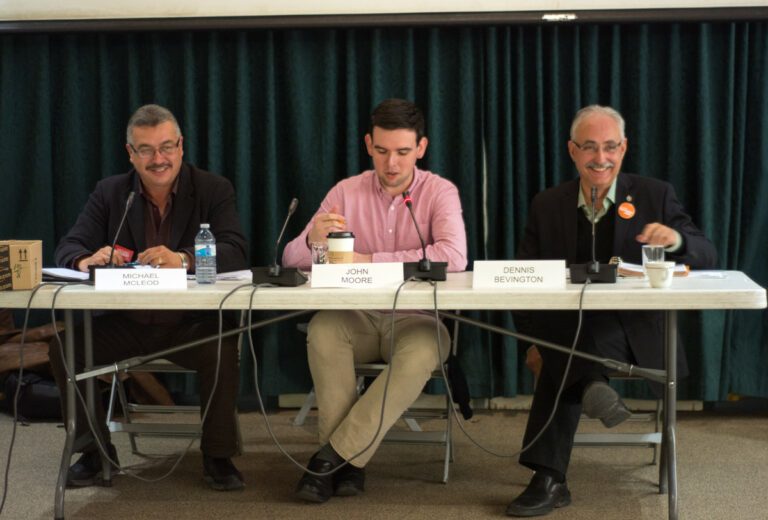The construction start date on one of the biggest infrastructural projects in NWT history is less than one year away. While critics attack the GNWT’s choice to fund it via the controversial private-public partnership (P3) method, the government tells EDGEYK.com that this decision will give NWT taxpayers 5 to 15 percent better bang for their buck. And it’s all because of risk.
The decision to fund the Stanton Renewal Project through a P3 created opponents almost immediately when it was announced in 2013. Several MLAs, most prominently Weledeh MLA Bob Bromley, criticized the GNWT for not funding the Stanton Hospital project solely through public funds. Union representatives expressed concern members will lose their jobs as the result of the privatization of non-clinical services.
And the P3 model certainly has a mixed record. Here in the NWT, some ’90s experiments with the model went sideways hard, and a more recent attempt at privately funding a massive piece of infrastructure – the Deh Cho Bridge – was a troubled project. Outside of the North, there are many success stories, but there’s also a long list of P3 projects that ended up costing taxpayers far more than they should have.
In this particular P3 model, the GNWT plans to pay 60 percent of the construction costs with public money over the planned five years of construction. The remaining 40 percent will be paid for by private capital, and the GNWT will pay off that debt in annual installments over the 30-year life-cycle of the contract.
Lower risks or higher costs?
The central idea of P3s is that rather than using public money and expertise to deliver major projects, the government outsources the work to private companies that take on the risks associated with completing the project (cost overruns, delays, increased transaction fees, etc.), in return for a contract to operate certain services.
The benefits include shifting risk away from taxpayers and tapping into private sector expertise and innovation. According to the GNWT’s Stanton Renewal Project website, P3s bring “more transparency, rigorous analysis, and accountability to procurement, construction, financing, and maintenance than traditionally procured projects.”
The drawbacks: P3s often cost more because governments can generally borrow money more cheaply than private companies.
Paying for infrastructure on credit?
“It’s kind of like paying for infrastructure on a credit card,” Dr. Matti Siemiatycki, a University of Toronto professor researching procurement models, told a House of Commons committee on P3s in 2012. “Someone finances you the money, but the government pays it back over an extended period of time at a considerably higher rate of interest.”
Based on his examination of 28 P3 projects in Ontario, mostly hospitals, Siemiatycki found it would have been 16 percent less expensive to deliver the projects through traditional procurement than via P3s.
Only once you start putting a price on the transfer of risk, he said, do P3s start delivering better value-for-money. And evaluating risk is a far-from-straightforward process.
Seeking clarity on the GNWT’s business case
The RFP went out last fall, and three companies were approved to bid on the project – the winner to be chosen sometime this summer. Current estimates for the project range at around $290 million, but the real costs will remain unknown until those bids come in.
Finance Minister Michael Miltenberger told EdgeYK.com he’s confident the government is making the right decision going with a P3. “We have some of the best people in the country looking at it, and the business case is clear.”
Over the past several years, experts from the international consulting giant Ernst & Young and Montreal-based Torys Law Firm have been brought in by the GNWT to assess which procurement model would provide better bang for the public buck. According to Sandy Kalgutkar, the assistant deputy minister of finance, the P3 was the clear winner, providing between 5 and 15 percent better value-for-money
Right now, it’s hard to assess this statement with any accuracy. The feasibility study and the business case remain confidential, and the value-for-money analysis won’t be released until after the contractor is chosen.
The GNWT’s rationale for withholding this information from the public is murky. Their most coherent response came from the Department of Finance’s Sean Craig, who argued keeping this information private maintains “competitive tension, [and preserves] our negotiating position,” until the bids come in.
What is the value of risk?
Miltenberger and Kalgutkar’s assessment really turns on how much the GNWT thinks passing off risk is worth. To be clear: they don’t think the project will be 5 to 15 percent cheaper. The P3 project might end up costing more than it would take to build it with only public funds but still be considered better value-for-money if it comes in at a cost less than the public price plus the value assigned to risk.
Until the value-for-money analysis is made public, it’s difficult to say whether or not the GNWT has appraised risk in a reasonable way. They may well have, but until they release the numbers, critics of P3s will have the floor.







